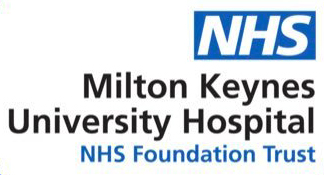
Eligibility
Local study conflicts
- None
Inclusion Criteria:
- Spontaneous Pneumothorax
- Age between 16 and 50 years old (inclusive)
Exclusion Criteria:
- Evidence of clinical tension pneumothorax
- SpO2 <92% on air
- Bilateral pneumothorax
- Pregnancy
- Inability to consent or comply with trial requirements
- Known or suspected underlying lung disease:
- Patients with a diagnosis of asthma in childhood or young adulthood, who do not use any medication, or only occasional 'reliever' medication and have never been hospitalised due to asthma are still be eligible
- Patients with a diagnosis of asthma who are on regular preventer medication or a history of ever having been admitted to hospital for asthma are excluded
If the patient is eligible:
- Gain verbal agreement in principle before proceeding. Explain:
- Taking part in research is likely to improve the quality of their care
- Risks are carefully controlled - research is safe
- Explain the uncertainty that exists with respect to treatment of their condition
- If they change their mind they can withdraw their participation at any point
Step-by-Step Guide to Recruitment:
In standard working hours; 8am - 4pm Monday to Friday
- Please contact the Research Team when eligible patients arrive in ED on 86981 or 87844 or 85328
Out of hours and weekends:
Nb.To confirm eligibility and randomise a patient you MUST be on the delegation log. If you are not on the delegation log speak to the EPIC (who should be on the delegation log) or call [out of hours] 01908995328
Gather documentation
- Collect “CONSEPT patient pack” from the Research Folder in the doctors office
Confirm eligibility
- Confirm Eligibility (This must be done by a Dr or a Nurse who is on the Delegation Log)
- Complete the upper section of the SL1 Screening Form then sign – ‘Name of Clinician confirming Eligibility’. (1/3 of the way down the form). Remember to put MRN in top right corner.
Gaining formal consent
- Receive Consent (Patient Consent only – the patient must have capacity). Complete consent form in the pack.
Randomisation procedure
- Online randomisation: https://www.sealedenvelope.com/access/
- You can use the details on the laminated sheet in RESUS & Dr Office
- Select CONSEPT Study
- Go to ‘Randomise’ (top left) -- enter required data to produce the participant’s trial allocation.
- Patient ID– this can be found in the top right corner (118-xxx) of SL1 Screening Form.
- Click on ‘Randomisation’ tab and enter required data to produce the participant’s trial allocation.
- Complete form R1 (in the per patient pack for our reference)
- The randomisation should then be recorded on the patient’s notes
- Place ALL the documentation (including the questionnaire) in Research Folder
- Email Research Nurses (emergencydepartmentresearch@mkuh.nhs.uk) with patient details.
Carrying out the intervention:
- Ask the patient to complete the patient questionnaire A1.
- Inform the clinical team which treatment steps the patient has been allocated to
Disposition and follow-up:
If admitted:
- Clinical teams can provide all standard clinical care
If discharged:
I.e. Patients allocated to conservative management (intervention group):
- Observe for a period of around four hours from hospital presentation, but the absolute observation period will be at the discretion of the treating clinician.
- If during the observation period any of the following occurs:
- Patient wants intervention due to significant symptoms;
- Patient develops physiological instability (SpO2 <92% on air, respiratory rate>25 breaths per minute);
- Repeat chest radiograph demonstrates an enlarging pneumothorax with clinical concern from a senior clinician (e.g. ST4 or above) with the reason recorded; Then they should switch to usual care (i.e. chest drain).
- After the observation period the participant should be discharged if they meet all of the following criteria:
- Symptoms controlled sufficiently to mobilise comfortably;
- Acceptable vital signs to a senior physician;
- No requirement for supplementary oxygen.
- Inform the patient that they will be followed up by the Research Nurses within the next 24-48 hours
- A minimum clinical follow-up (within 7-10 days time) is recommended for patients managed on the ambulatory or conservative pathway to ensure patient safety, discuss referral with the Respiratory Team (for Dr Bagmane’s clinic or pleural clinic).
- A research visit will be conducted at day 30 day (+7 days). At this visit, the patients will undergo a chest radiograph and complete questionnaires to record their pain and breathlessness levels.
- Provide standard safety net advice, written and verbally, for patient with a pneumothorax:
- Smokers should be advised to quit and seek assistance from their GP to successfully achieve this (Men who smoke more than 20 cigarettes a day have 100 times the risk of developing a pneumothorax compared to men that don’t smoke.)
- avoid flying for at least a week after a chest radiograph has confirmed complete resolution of their spontaneous pneumothorax, or until they have recovered from a definitive cardiothoracic surgical procedure aimed to prevent pneumothorax recurrence
- underwater diving should be permanently avoided after a pneumothorax, unless the patient has had bilateral open surgical pleurectomy
- They should return for re-assessment should they become breathless
- From RCEM Learning module spontaneous pneumothorax (opens in new window)
There is a 24/7 phone line dedicated to addressing enquiries related to eligibility and randomisation. This is to ensure that you can access crucial information at any time. Please call if you need support - 01865 282954